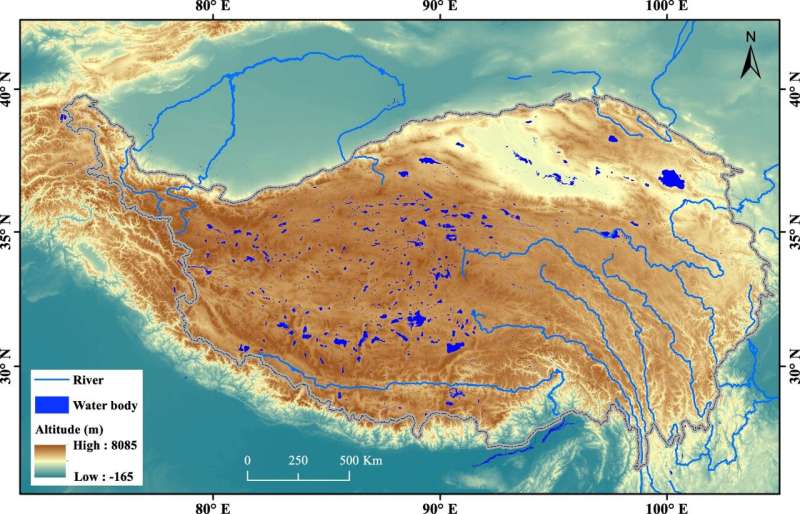This article has been reviewed according to Science X's editorial process and policies. Editors have highlighted the following attributes while ensuring the content's credibility:
fact-checked
peer-reviewed publication
trusted source
proofread
Researchers unveil most detailed map of water bodies across Qinghai-Xizang Plateau

Terrestrial water bodies (WBs), including lakes, ponds, and reservoirs, are pivotal components of Earth's hydrological and biogeochemical systems, offering vital ecosystem services. Yet, conventional studies often overlook small water bodies or overstate their prevalence. This is particularly true for regions like the Qinghai-Xizang Plateau, which is home to numerous alpine lakes. In these areas, human impact is minimal, and the number of small water bodies is increasing due to glacier melting.
In a study published in Scientific Data, researchers from the Aerospace Information Research Institute of the Chinese Academy of Sciences unveiled the most detailed dataset to date, illuminating the complex network of water bodies sprawled across the Qinghai-Xizang Plateau.
This dataset, openly available in figshare, paints a holistic picture by furnishing a high-resolution map of water bodies, making the details down to a remarkable 2-meter precision for the year 2020.
Produced with stringent quality control measures, the dataset underwent manual scrutiny to ensure its precision. Leveraging Gaofen-1 satellite data and harnessing the Swin-UNet model, researchers achieved an impressive overall accuracy of 98%.
The IOU, a metric commonly used to evaluate the performance of object detection algorithms, was relatively low with 68%, which may result from the small covering proportion of water bodies in an image. Manual corrections guided by visual interpretation fine-tuned the extracted water bodies enhance data fidelity.
Comparisons with previous studies showed that the total area of water bodies exceeding 1 km2 soared to 51,034.6 km2, eclipsing earlier estimates, indicating a burgeoning water body landscape. The analysis of size-abundance relationships unveiled a shoreline fractal dimension of 1.263 (R2=0.966), and that the deviations from conventional power law distributions come from larger water bodies.
Spatial resolution comparisons underscored the resolution's impact on parameter estimation with higher resolutions yielding superior results, especially in abundance estimation. Moreover, the dataset underscored the pivotal role of small water bodies in regional biogeochemical cycles, despite their modest surface area, owing to their heightened fluxes and reaction rates compared to larger lakes.
This study provides valuable resources for deciphering the distribution and traits of inland water bodies on the Qinghai-Xizang Plateau.
More information: Zhengchao Chen et al, A high-resolution dataset of water bodies distribution over the Tibetan Plateau, Scientific Data (2024). DOI: 10.1038/s41597-024-03290-4
Chen et al, Inland water bodies of 2020 over Tibetan Plateau (WBTP), figshare (2023). DOI: 10.6084/m9.figshare.24616491.v2
Journal information: Scientific Data
Provided by Chinese Academy of Sciences




















